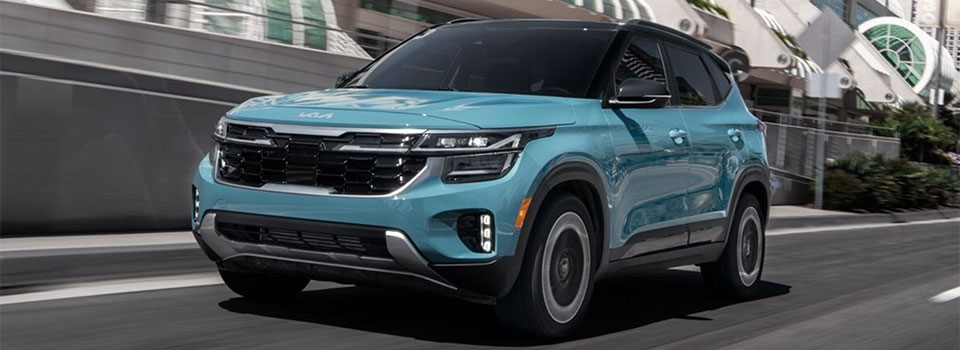
The 2024 Kia Seltos is a subcompact crossover SUV that seats five passengers. For the 2024 model year, the Kia Seltos receives several changes to keep it competitive.
What's New for the 2024 Kia Seltos?
The SUV's look has improved with new tire designs, a rear light bar that joins the taillamps, and a redesigned grille. The more conventional shift lever from the present model has been replaced with a rotary controller. An updated infotainment panel with two big screens has been added to the cabin.
What Are the 2024 Seltos Trims & Features?
The Seltos will offer LX, S, EX, X-Line, and SX trims. The eight-inch touchscreen on the LX will only offer a few features. The larger 10.25-inch touchscreen, automatic climate control, smart key access, and remote engine start are all available starting with the S model. The EX comes standard with a sunroof, while the SX may add one as an option.
Both vehicles also have blind-spot warnings and rear cross-traffic alerts. The Nightfall has a stronger engine than the EX. The X-Line trim adds off-road features and an edgier appearance, including a different grille, special 18-inch alloy wheels, gloss-black door trim, a roof rack, and distinctive X-Line badging.
How Much Horsepower Do the 2024 Seltos Have?
A 2.0-liter four-cylinder engine will be standard on the Seltos. It has a constantly variable automatic transmission and can come with either front or all-wheel drive. The upper-tier Kia's turbocharged 1.6-liter engine adds a significant amount of power.
The turbocharged powertrain produces an additional 20 horsepower, bringing output to 195. The eight-speed conventional automatic has replaced the seven-speed dual-clutch transmission.
What Safety Features Do the 2024 Seltos Include?
The 2024 Seltos will come with automated emergency braking, pedestrian detection, lane-departure warning, and lane-keeping assist as a standard feature. It will also come with adaptive cruise control with a lane-centering feature.
With adaptive cruise control, the car will maintain a predetermined speed and separation from the car in front. This feature automatically changes the vehicle's speed to maintain a safe following distance using sensors, like radar or cameras, to monitor the distance and speed of the car in front.
On the other hand, lane-centering technology employs cameras or sensors to identify lane markers on the road and maintain the vehicle's position in its lane. This feature will also make slight modifications to the steering to prevent the car from veering off the road.
Visit Us in Houston, Texas Today
For more information about the car, contact us or visit us at our Houston, TX, dealership.